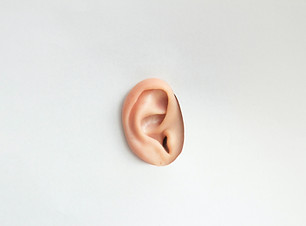What if you could see music? I was born with a highly impractical, cross-wired neurostructure which forces me to do just that. In this type of synaesthesia, sounds conjure clear, detailed and reproducible mental images, which allows me to see musical processes in real time, and to collapse the entire musical piece into a single moment thereafter, a bit like a 3D painting. It was only in 2024 when I realised that this was not a universal trait. As a result, I started developing the Music Visual Scale (MVS): an original system for making my way of seeing music perceptible to others, and rendering music visible — even completely heterogeneous features like harmony, dynamics, phrasing, expression and formal structure, without losing any information. Unlike conventional notation, the MVS reveals the spatial and timbral architecture of music in real time, allowing one to see sound as shaped motion across a mental canvas. This animated process can also be represented statically with very little effort, allowing an instantaneous overview over any given piece of music.
The MVS is designed to foster intuitive thinking, facilitate composition and sound design, and illuminate the aesthetic logic that underpins music. More than just a niche thought experiment, the MVS's potential applications reach beyond the field of music itself.
I am currently working on two components of this project:
-
Elegant Music, a book transmitting the didactic method for acquiring this skill
(and I am interested in hearing from potential publishers) -
A standalone computer program which will apply the method and translate any piece of music into its visual equivalent (and I'd be happy to hear from people competent in coding & app building)
More below.
USE CASES & APPLICATIONS

Teaches people to see music
No need for external lightshows. The didactic for the MVS teaches people to visualise complex patterns in music – without the years-long theoretical training previously required. A profound, immediate understanding exponentially increases the pleasure derived from listening to music.

"Impossible" audio engineering
Up until now, it has been notoriously difficult, almost impossible, to separate different components of any given music after mixdown. The MVS provides a theoretical framework to allow future DAWs to do just that.

Improves music as a field
Since the MVS allows its users to visualise complex musical structures at once and with ease, it also allows them to compose proficiently – and to separate the wheat from the chaff when improving their works.

Facilitates language learning
In many languages, pronunciation differs markedly from orthography. Using the MVS to visualise the sound of a phrase rather than relying on spelling greatly facilitates the acquisition of phonetically complex languages such as Chinese, Russian or French.

Opens music to the Deaf
With the MVS, even complex music can be brought to life with a unique, accurate and non-random representation. Using the graphical, animated output, the complexity and joy of music can be shared even with those who can't hear it – be it a Beethoven symphony or the raw energy of punk rock.

Lays ground for AI sentience
Music is difficult to pin down in purely mathematical terms. The MVS allows for visualisation of the more fuzzy components, such as subtle variations between different interpretations and mixes – nuances with inexplicably profound effect. Using this information, an artificial consciousness could be programmed to react immediately and intuitively, just like a human would.

Promotes synergistic thinking
Up until now, synaesthesia was thought to be a congenital trait. But with the MVS, a part of it can be trained and taught. Since no part of the brain operates in isolation, this is likely to stimulate the user's creative and synergistic thinking in unrelated fields as well.

Retrieves masterpieces
Music archives notoriously suffer from underfunding and understaffing, with the result that unsung late composers and forgotten masterpieces have little prospect of being discovered. A program trained in the MVS would be able to visualise archival music and preselect potentially interesting works, drastically reducing workload for overwhelmed institutions.

Truly explains music
Many great philosophers and physicists have examined music; but so far, none has found an exhaustive, clear answer on what music actually is, and why seemingly simple waves have the effect that they have. With the MVS, humanity would move one step closer to understanding the organic, living, breathing nature of music.
CURIOUS?
If you are an enterprise, publisher, researcher or IT professional interested in learning more, please get in touch using the Contact Form.